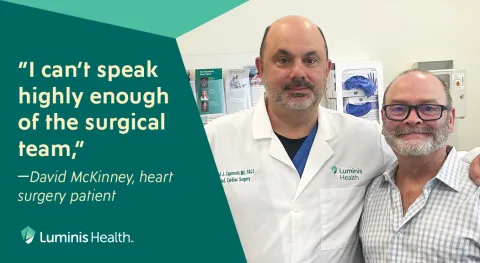Cardiac imaging tests allow your doctor to get a clear picture of your heart and blood vessels. This allows us to see how your heart is working.
Our heart specialists use the most advanced cardiac imaging technology to monitor, diagnose, and treat you. Here's an overview of a common cardiac imaging test.
Angiography and Cardiac Catheterization
Angiography (or cardiac angiogram) is a type of x-ray. It allows your doctor to look at your heart's blood vessels with the help of a special dye that highlights your blood vessels. The dye shows if there are any blockages that can restrict blood flow to your heart.
Angiography is done during cardiac catheterization. That's when your doctor places a thin tube called a catheter into your blood vessel. We inject the dye into the catheter so we can get a better picture of your blood vessels on the x-ray.
Once the cardiac catheter is in place, your surgeon can also do various procedures to open blocked arteries.
Who gets angiography?
We might recommend angiography if we think you have plaque buildup in an artery. It also helps us diagnose problems with your blood vessels or heart valves.



